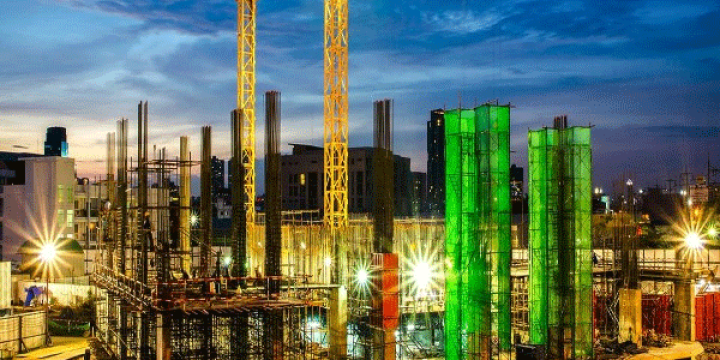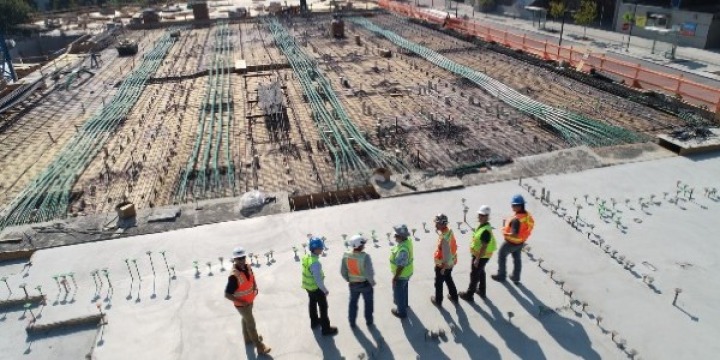January 03, 2023 Industry news
As 2022 marked the beginning of our expansion into the construction sector, we ended the year with our first UK construction event, bringing together experts from across industry.
The construction industry currently faces significant challenges in becoming more efficient, increasing safety, improving productivity, and lowering costs. New legislation also means there is an increased need for information and data to be available on what products and materials have been used in the creation of a building.
Businesses across the industry must digitalise if they are to deliver lasting change and a clear pathway for the future. That is why GS1 UK is now engaging with key stakeholders to develop standards-based solutions for streamlining their supply chains, improving sustainability, and increasing transparency.
Collaboration is key
Entering this sector represents a major new milestone for GS1 UK and we look forward to building on collaborations that are now underway to explore the challenges of today and opportunities of tomorrow.
We were particularly thrilled to host our very first construction event at the New London Architecture Gallery on 29 November. Featuring experts from across the industry, “Powering the future of construction” presented a unique opportunity to hear how through the power of GS1 standards, organisations can use accurate, interoperable data to ensure that trusted products are delivered to the right location, on time, and are used correctly.
A wide variety of valuable insights on a range of key topics were shared by our speakers, including:

Data and digital buildings
Nick Wright, global head of digital solutions at the real estate services and investment firm, CBRE Group, discussed how capturing and utilising data is essential for developing digital strategies that deliver better building outcomes, user experiences and client services.
He began by describing how businesses first need to understand the role of data and digital solutions, describing the latter as “the glue between the physical and the human.”
Nick believes that developing sustainable building operations, safer environments, optimising efficiency, and utilising automation will all require a single source of data that guarantees transparency.
Using and exchanging this data via some form of centralised materials and equipment register would ensure it retains its value, enabling continual updates and improved processes to be implemented at every stage of the building lifecycle.
He advised any businesses looking to implementing digital solutions to view technological transformation as a journey rather than a purchase and recommended digital building strategies be built around three key pillars:
- Sustainability: how can stakeholders and investors provide sustainable environments, reduce consumption and emissions, and increase environmental, social, and corporate governance (ESG) value?
- Operations: how can asset managers enhance efficiency, reduce utility spend and increase uptime?
- Experiences: how do we create places that people actually want to live by reducing friction and improving quality of life?
Nick says that building your plans around these three key drivers for change will enable you to find a clear starting point for digitalisation, procure the right technologies and deliver ROI.

New opportunities and legislation in construction
Next up was David Button, senior account director at Cavendish Advocacy, a political and corporate communications agency who specialise in landing powerful messages with political audiences.
David’s presentation provided the audience with an overview of how current political instability, Government priorities and opportunities in the political agenda could impact the construction industry.
He described how Secretary of State for Levelling Up Michael Gove’s current focus on improving building safety, housing standards and sustainability present clear opportunities for implementing standards and traceability.
This is perfectly encapsulated by Building Safety Act which received Royal Assent in April 2022. Introducing a raft of reforms designed to enhance regulation around building safety and construction, the Bill’s requirement for a “golden thread” of information makes the use case for standardised data even stronger.
Understanding what materials are used, when they are used and where, not only enables those within the industry to plan, monitor, and coordinate health and safety during the construction phase, it also enables them to ensure a building performs the way it should in the future.
Like safety, sustainability is becoming increasingly high on the agendas of businesses, governments, and consumers alike. As the Government look to build greener homes and support the decarbonisation of existing stock, David explained how data standards can play a key role here too.
In order to safely reuse, refurbish and recycle buildings and products, we need to know exactly which materials are involved. GS1 standards offer the visibility of products, parts and components required to develop truly sustainable strategies and, by significantly reducing unnecessary waste and boosting efficiencies, can support the creation of more sustainable supply chains.

GS1 standards in BIM and FM
Seán Dennison, head of industry engagement and technical standards at GS1 Ireland then explored the role of GS1 standards in Building information modelling (BIM) and Facilities Management (FM).
Seán explained that a significant part of the building information created in early phases of a project is relevant for the entire lifecycle of the building asset. However, BIM has been integrated within digital design, construction projects and delivery processes for many years, it is still a relatively new concept in facility management.
This is why GS1 is working to support the creation of a long-term roadmap for data-centric workflows and BIM based applications for the whole lifecycle of a building or asset.
Seán described how GS1 standards can help accelerate the merging of BIM into facility management processes and bring clarity to the information needs of the operational phase. By facilitating the capture and sharing of accurate BIM data, such an approach could significantly enhance the lifecycle management of estate portfolios, facilities, and assets.
The future of GS1 UK in construction
Rachel Heaton, engagement manager for construction at GS1 UK concluded the presentations with an update on our plans for the future.
She described how by focusing our efforts on the areas where consumer need, legislation and industry efficiencies intersect, we have begun engaging with key stakeholders across the industry and have held our first construction user groups.
We are now drawing on expertise from the GS1 centre of excellence and other GS1 organisations around the world to develop a campaign-based approach for raising awareness of how standards can be used to address the key issues of today, and the regulatory challenges of tomorrow.
Rachel was followed by a panel discission featuring Robert Barbour, group data and insight director at Travis Perkins. Angel Jimenez, digital innovation director at Genuit Group and CBRE’s, Nick Wright.
An overview of the insights they shared on the current industry landscape, the challenges and opportunities facing the sector and the role GS1 standards, will be published on the GS1 UK website soon.


